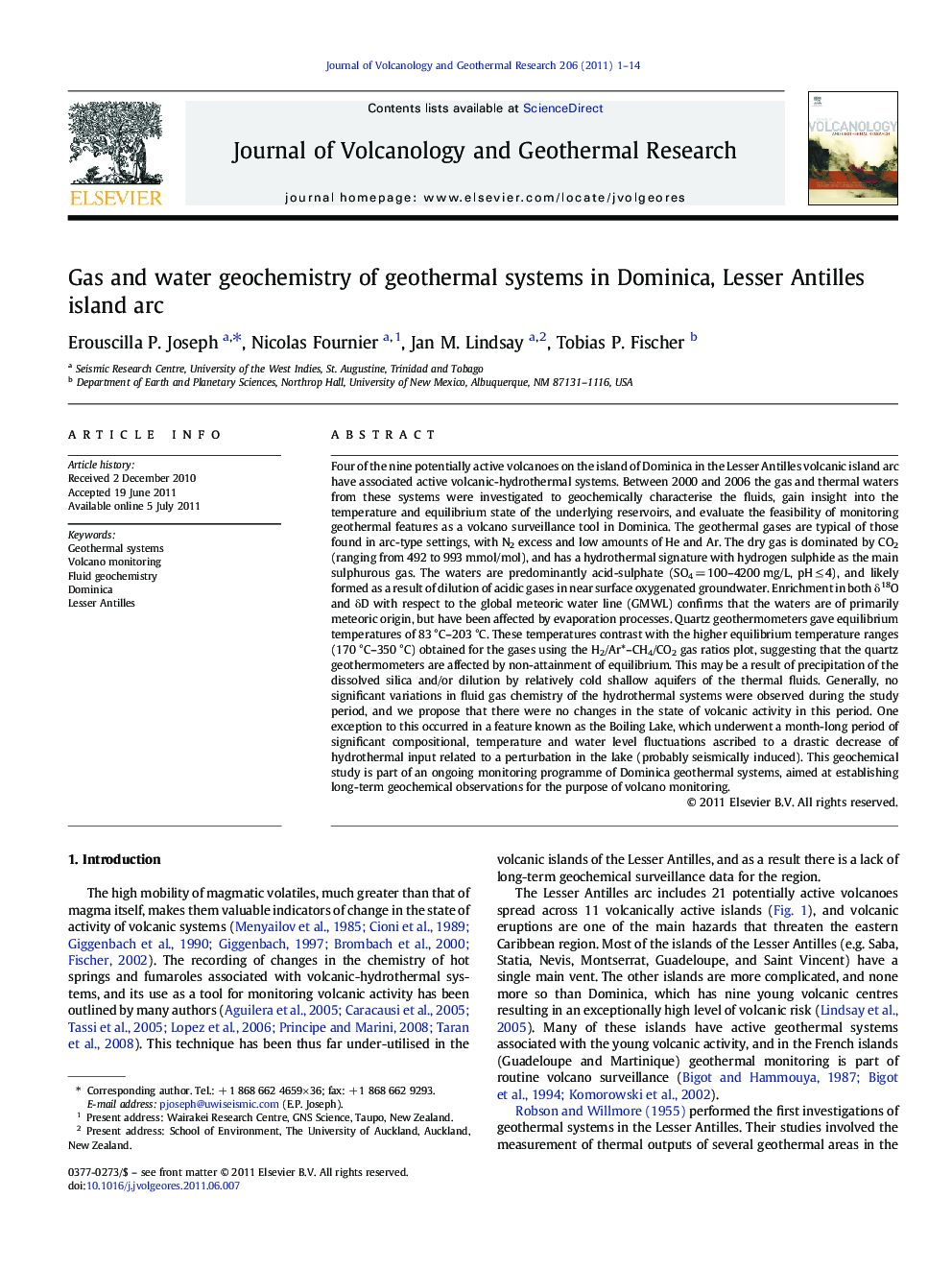| کد مقاله | کد نشریه | سال انتشار | مقاله انگلیسی | نسخه تمام متن |
|---|---|---|---|---|
| 4713926 | 1638398 | 2011 | 14 صفحه PDF | دانلود رایگان |

Four of the nine potentially active volcanoes on the island of Dominica in the Lesser Antilles volcanic island arc have associated active volcanic-hydrothermal systems. Between 2000 and 2006 the gas and thermal waters from these systems were investigated to geochemically characterise the fluids, gain insight into the temperature and equilibrium state of the underlying reservoirs, and evaluate the feasibility of monitoring geothermal features as a volcano surveillance tool in Dominica. The geothermal gases are typical of those found in arc-type settings, with N2 excess and low amounts of He and Ar. The dry gas is dominated by CO2 (ranging from 492 to 993 mmol/mol), and has a hydrothermal signature with hydrogen sulphide as the main sulphurous gas. The waters are predominantly acid-sulphate (SO4 = 100–4200 mg/L, pH ≤ 4), and likely formed as a result of dilution of acidic gases in near surface oxygenated groundwater. Enrichment in both δ18O and δD with respect to the global meteoric water line (GMWL) confirms that the waters are of primarily meteoric origin, but have been affected by evaporation processes. Quartz geothermometers gave equilibrium temperatures of 83 °C–203 °C. These temperatures contrast with the higher equilibrium temperature ranges (170 °C–350 °C) obtained for the gases using the H2/Ar*–CH4/CO2 gas ratios plot, suggesting that the quartz geothermometers are affected by non-attainment of equilibrium. This may be a result of precipitation of the dissolved silica and/or dilution by relatively cold shallow aquifers of the thermal fluids. Generally, no significant variations in fluid gas chemistry of the hydrothermal systems were observed during the study period, and we propose that there were no changes in the state of volcanic activity in this period. One exception to this occurred in a feature known as the Boiling Lake, which underwent a month-long period of significant compositional, temperature and water level fluctuations ascribed to a drastic decrease of hydrothermal input related to a perturbation in the lake (probably seismically induced). This geochemical study is part of an ongoing monitoring programme of Dominica geothermal systems, aimed at establishing long-term geochemical observations for the purpose of volcano monitoring.
► This research seeks to improve the understanding of hydrothermal systems associated with live volcanoes in Dominica.
► Fluid geochemistry is investigated to evaluate the feasibility of geothermal monitoring as a volcano surveillance tool.
► Chemical composition of the hydrothermal waters indicates a primarily meteoric origin, with minor magmatic component.
► A characteristic feature of the hydrothermal gases is their lack of deep originated gas compounds (HCl, HF, SO2).
► Dominance of a meteoric component suggests low magmatic fluid flux, or thick reservoirs enough to buffer magmatic inflow.
Journal: Journal of Volcanology and Geothermal Research - Volume 206, Issues 1–2, 1 September 2011, Pages 1–14